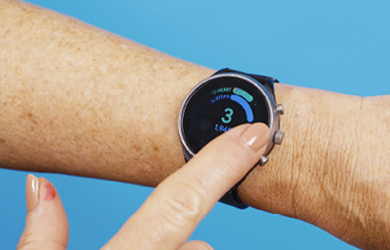
4 tips for better weight management
Being overweight (or carrying excess body weight) can increase your risk of developing type 2 diabetes and cardiovascular disease.
For anyone living with type 2 diabetes, it is important to know a few things about what your blood sugar is up to. Is it going up? Is it coming down? And if so, what was your role in that? It turns out that your choices, habits and timing all have something to do with the changes in your blood sugar.
Let’s talk about high blood sugar or spikes. The fancy name for spikes is hyperglycemia (where hyper- means over) as opposed to hypoglycemia (where hypo- means under)1. A continual glucose monitor can send you alerts when you are going into 'hypers' and 'hypos' so you can take action to keep your blood sugar stable. Learn more about continual glucose monitoring.
Blood sugar spikes generally happen when your body resists the effects of insulin or does not produce enough of it. An immediate result can be frequent urination and increased thirst to name just a few things2. How can you prevent these?
As this video explains, diet and exercise are a big part of it. Let’s talk about diet for a moment.
What you eat matters. Most importantly, learn how to choose carbs, and learn how to tell the difference between simple (fast-release) and complex (slow-release) carbs3.
To make rapid blood-sugar spikes less likely, eat nutrient-rich, complex carbs whenever you can. That means limiting your simple-carb consumption, including processed white foods like white bread, pasta, flour and rice3.
A few diet tips: Brown rice, oatmeal, quinoa and bulgur – all of these are excellent. And when choosing bread, pasta or crackers, decide to go with wholegrain on principle, every time3.
And remember: Vegetables and meats are important sources of nutrients too – and safe to eat. One meal may consist of 25% carbs, 25% protein and 50% vegetables – a useful pie chart to bear in mind when you put food on your plate4.
HQ23DI00456
